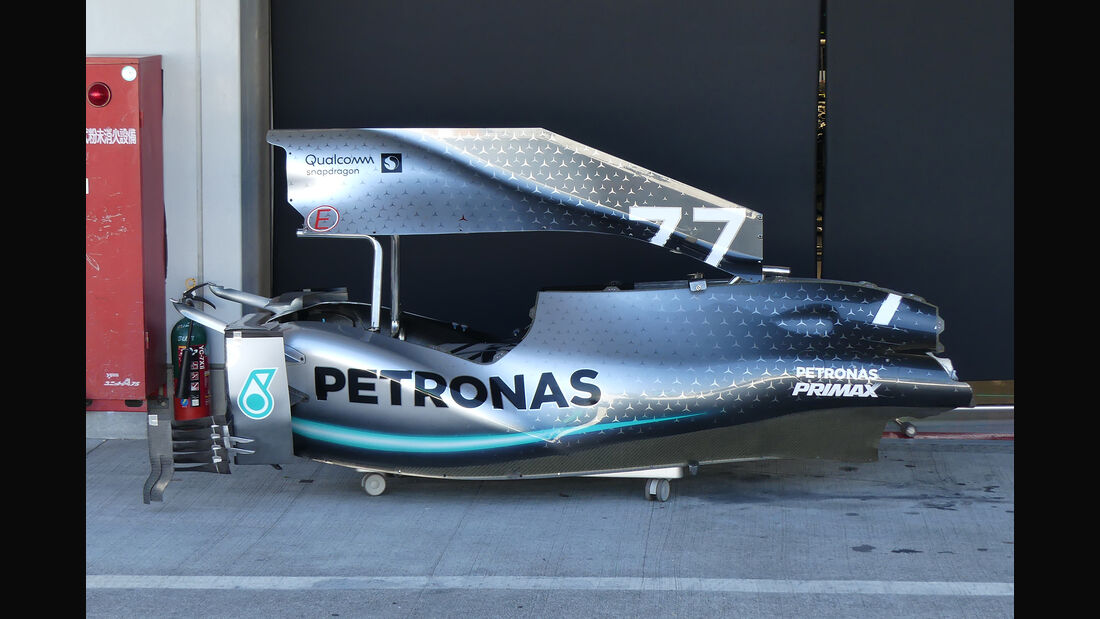This subject was spotted since Germany 2018 and lengthly discussed in last year`s Ferrari PU thread ...zibby43 wrote: ↑02 Oct 2019, 05:58...
I'm not sure. Maybe someone with more knowledge than me on that topic could chime in. Someone once said that, due to the power curve of the hybrid turbo engines being so wide and flat (compared to the previous naturally aspirated engines), the gearing is not as critical to performance, and accordingly, as a cost-cutting measure, they decided on fixed ratios for the season back when the new PU regs were introduced.
In Sochi, the Mercs weren't far off the Ferraris in terms of overall top speed. The big difference has been the Ferrari's rate of acceleration, which rockets them to that top speed very quickly, allowing them to achieve it quicker and maintain it for longer.
The Ferraris rate of acceleration on the straights is downright extraordinary. Any talk of a new, clever way to burn oil via unregulated ICE components seems like a big red herring. It wouldn't make sense to deploy a tactic like that only on straights, either. It has to be a clever deployment trick. It's interesting that Ferrari have had CE-related failures this year.
Apparently, it was an electrical insulation failure of the ERS system that led to Vettel's retirement in Sochi.
Back then they could see that Ferraris car was accelerating faster after ~ 250km/h and things were looking even brighter this year after we saw VET vs. HAM qualy lap in Canada, now they starting that just after some 235km/h ...
Nonetheless, we should realise that Ferrari has this advantage partly down to PU but also to their car low drag philosophy which btw it started back from 2018 and I`ll be interesting to know what part do the most, percentage-wise.
Now regarding the PU side, there are many factors to take into consideration.
First and foremost, seeing that Merc where almost every race in pole or just in the front row, I think they have started with the philosophy saying that position is king in order to win a race, thus heading for a qualy car rather than designing a car which is fastest in the race. This led to their low drag philosophy and we should bear in mind that a lower drag car needs a slightly weaker PU than a draggy car-like W10. Furthermore, they need also to be quick on the straights but not due to topping the speed traps: their goal was to reach sooner and stay longer on that particular top speed! And that`s the real deal!
There are many speculations regarding how they could do that.
Some said they have a particular torque at that speeds which are helping them in that acceleration phase. In contrast, Merc is always developing PU torques that are in line with their car and PU philosophy which is fuel-efficient more than Ferraris one, many teams saying that Merc car always is under fuelled and also Merc drivers almost never complaining about fuel saving in the race. In addition, they Merc power and torque curves are further developed in order to give them more traction in low-speed corners, thus in the lower rpm range.
Then there are other speculations regarding the 4MJ/lap deployment. At this matter some said Ferrari can go for the entire lap (not just for 33.3 sec) with MGU-K at full 120kW power allowed by the rules, something that Merc and other teams are struggling to do. This could be done only via MGU-H to MGU-K which is unlimited by the rules. And this could be the differentiator factor with Ferraris one being the best/powerfull from all. Then they could prioritise their PU and ERS mapping for the straights.
And last but not least the so-called "black magic" that is the fuel formula, which is responsible for the big gains in the ICE area now that all manufacturers are driven by the low of diminishing returns. This fuel and lubs matter is very often superficially overlooked and I fully understand why: F1 is a mechanical rather than a chemical/chemistry sport, thus there`s a very small percentage of knowledge on this forum and hardly could get one any chemical engineer background here






